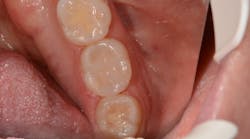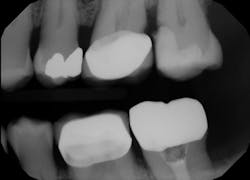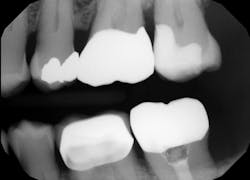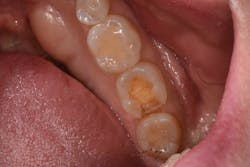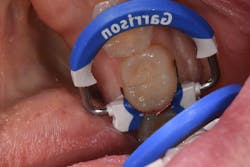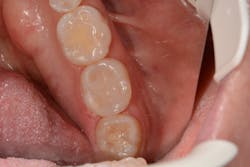Best practices for class II restorations: Innovative thermoviscous bulk-fill composite
Class II fillings are one of the most common restorations in dentistry, with interproximal decay on the rise in certain populations despite all modern preventive measures. The most prevalent cause of posterior composite failure is recurrent caries.1 One of the weakest links in class II restorations is microleakage at the gingival margin of the proximal box, which contributes to postoperative sensitivity and a high incidence of secondary caries accounting for many clinically failed restorations.
Causes of dental restoration failure
Secondary caries is indeed considered one of the most frequent causes of restoration failure, irrespective of the restorative material used. This has a considerable impact on health-care expenditures since the replacement of restorations due to secondary caries represents a large part of the restorative work in a dental practice. Moreover, subsequent replacement or repair of a restoration leads to further tooth loss and weakening of the tooth structure. Ultimately the so-called restorative death spiral occurs, which may eventually lead to tooth loss.2
Secondary caries with composites is to some extent associated with the restorative material, as significantly more caries occurs with composites than with amalgam.3 Polymerization shrinkage and subsequent microleakage, higher plaque accumulation, lack of antibacterial and acid-buffering effect, and changes in microbial composition may lead to the composite’s increased susceptibility to secondary caries.4
When packing composite into the proximal box, the material can be sticky and pull back with the placement instrument. It may be difficult to obtain a seal at the cavosurface margin at the base of the box. Also, volumetric polymerization shrinkage of resin-based composite, being in the range of 2% to 3%, could cause various problems and result in gaps between the tooth and the restorative material.5 Such gaps may contribute to the formation of secondary dental caries or pathologic changes in the dental pulp.6
Related reading:
Techniques to improve restorative outcomes
To counter these issues, techniques such as placing a flowable composite or resin-modified glass ionomer (RMGI) restorative layer at the base of the box are being utilized. This is referred to as the sandwich technique. This technique is described as a layering of various restorative materials within the cavity preparation. It involves placing an RMGI restorative at the base of the cavity preparation, followed by curing and the addition of a composite restorative to complete the restoration.7
Bulk-fill flowable and packable composites are also being utilized to speed up the restoration process. Increments up to 4 mm or 5 mm thick can be cured in one step, thus skipping the time-consuming layering process. Moreover, the rheology of the flowable materials is thought to have changed, allowing a better adaptation to the cavity walls and resulting in a self-leveling effect.8 Some bulk-fill composites require a capping layer of regular composite resin for occlusal surfaces.
The second challenge with class II composite restorations that many clinicians face is obtaining contact with the adjacent tooth. Insufficient contact can lead to food impaction, periodontal issues, recurrent decay at the base of the box, and is an annoyance to patients. Utilizing sectional matrix bands can produce reliable interproximal contacts. When placing class II composite resin restorations, the use of sectional matrix systems and separation rings provides tighter proximal contacts than traditional circumferential matrix systems.9 Flowable materials do not allow compression against the matrix band and can lead to open contacts even when sectional matrix systems are used.
This failure of class II composite restorations can cause further loss of tooth structure, endodontic pathology, and tooth loss. Failures are reported as early as two years after placement. As clinicians, we strive to improve class II restorative outcomes.
VisCalor bulk (Voco), the first thermoviscous bulk-fill composite, has the viscosity of a flowable composite and the sculptability of a packable composite all in a single material. Prior to placement, this material is warmed in a modified caps warmer or the VisCalor dispenser. The material is flowable as it is placed in theClinical case no. 1
The upper left first molar has recurrent decay at the distal crown margin as well. The open proximal contact may have contributed to the failure of this crown.
The failing composite restoration was removed along with the recurrent decay. A new restoration was placed using VisCalor bulk (figure 2). The flowability of theClinical case no. 2
The lower left second molar was prepared for a class II composite restoration (figure 3). A sectional matrix band was placed and wedged. The preparation was etched, and adhesive was placed and cured. The VisCalor bulk was heated in the heating gun and then dispensed into the base of the box while in its flowable state. Note the complete adaptation of the material to the walls ofEditor's note: This article appeared in the November 2021 print edition of Dental Economics.
